The Versatility and Benefits of Aluminium T-Bars
What is an Aluminium T-Bar?
An aluminium T-bar is a structural component with a cross-section shaped like the letter “T.” The horizontal part of the T is referred to as the “flange,” while the vertical part is known as the “web.” This design provides excellent strength and support, making T-bars suitable for both load-bearing and decorative purposes.
Manufactured from high-quality aluminium alloys such as 6061 or 6063, aluminium T-bars are corrosion-resistant, lightweight, and durable. They are available in various sizes, finishes, and customizations, allowing them to meet the specific needs of diverse projects.
Key Features of Aluminium T-Bars
1.Lightweight: Aluminium T-bars are significantly lighter than steel, making them easier to transport, handle, and install.
2.Corrosion Resistance: Aluminium’s natural resistance to rust and corrosion ensures longevity, even in harsh environments like coastal or humid areas.
3.High Strength-to-Weight Ratio: Despite being lightweight, aluminium T-bars offer exceptional strength, ideal for structural applications.
4.Customizable: Available in various dimensions, finishes, and coatings to suit specific design and functional requirements.
5.Eco-Friendly: Aluminium is 100% recyclable, making T-bars an environmentally sustainable choice.
6.Thermal Conductivity: Aluminium’s excellent heat conductivity makes T-bars suitable for applications requiring thermal management.
7.Ease of Fabrication: Aluminium T-bars are easy to cut, weld, and machine, offering flexibility in design and usage.
8.Non-Magnetic: This property makes aluminium T-bars safe for use in sensitive electronic or magnetic environments.
Applications of Aluminium T-Bars
The versatility of aluminium T-bars makes them suitable for a wide array of industries and projects. Here are some common applications:
1. Construction and Architecture
Aluminium T-bars are frequently used in construction projects due to their strength, lightweight properties, and corrosion resistance. Common applications include:
Frameworks: T-bars provide structural support for walls, ceilings, and other frameworks.
Edging and Bracing: They are ideal for reinforcing edges and providing additional stability to structures.
Partition Walls: T-bars help create partitions in residential and commercial buildings.
Decorative Features: With various finishes available, T-bars can be used for architectural details and aesthetic purposes.
2. Industrial Applications
In industrial settings, aluminium T-bars are often utilized in machinery and equipment manufacturing. Their durability and ease of fabrication make them suitable for:
Machine Frames: Providing a stable and lightweight framework for industrial machines.
Supports and Braces: Used to stabilize equipment and structures.
Conveyor Systems: T-bars act as guiding rails or support beams in conveyor assemblies.
3. Interior Design and Furniture
Aluminium T-bars are increasingly popular in interior design and furniture-making due to their sleek, modern appearance and functional benefits. Examples include:
Shelving Units: T-bars serve as supports for shelves in both residential and commercial spaces.
Table Frames: They provide a durable yet lightweight frame for tables and desks.
Decorative Features: T-bars can be incorporated into furniture designs for a modern industrial look.
4. Marine and Automotive Applications
Thanks to their corrosion resistance, aluminium T-bars are widely used in marine and automotive industries. Common uses include:
Boat Construction: T-bars are used in hull reinforcements, decking, and other structural components.
Vehicle Frames: They provide lightweight yet strong support in automotive structures.
Benefits of Aluminium T-Bars
Aluminium T-bars offer numerous benefits, making them a valuable choice for a variety of applications:
Durability: Aluminium T-bars are built to last, even in challenging environments, reducing the need for frequent replacements.
Cost-Effectiveness: The lightweight nature of aluminium reduces transportation and installation costs, while its longevity minimizes maintenance expenses.
Versatility: Aluminium T-bars can be used in an array of projects, from construction to furniture design.
Aesthetic Appeal: The sleek and modern look of aluminium makes it a popular choice for visible structural elements.
Sustainability: Being fully recyclable, aluminium T-bars contribute to eco-friendly construction and manufacturing practices.
Customization Options
One of the standout features of aluminium T-bars is their ability to be customized to meet specific project needs. Manufacturers offer:
1.Dimensions: Choose from a range of flange widths, web heights, and thicknesses to suit your structural or aesthetic requirements.
2.Finishes: Options include anodized, powder-coated, brushed, or polished finishes for enhanced appearance and protection.
3.Lengths: Standard lengths are typically 3m or 6m, but custom lengths can be fabricated upon request.
4.Alloy Grades: Select the appropriate aluminium alloy for your application, such as 6061 for strength or 6063 for a smoother finish.
Tips for Choosing Aluminium T-Bars
When selecting aluminium T-bars for your project, consider the following factors:
1.Load Requirements: Determine the weight and stress the T-bar will need to support to select the appropriate size and thickness.
2.Environmental Conditions: Choose a corrosion-resistant finish if the T-bars will be used in outdoor or marine environments.
3.Aesthetic Needs: For visible applications, select a finish that complements the design of your project.
4.Fabrication Needs: Ensure the T-bar is easy to cut, weld, or machine if customization is required.
Conclusion
Aluminium T-bars are an indispensable component for a wide range of applications, offering a unique combination of strength, versatility, and aesthetic appeal. Whether you’re building a robust framework, designing stylish furniture, or working on industrial equipment, aluminium T-bars provide the reliability and functionality you need. With their lightweight properties, corrosion resistance, and ease of customization, these T-bars are a cost-effective and sustainable solution for modern construction and design challenges.
















































































































